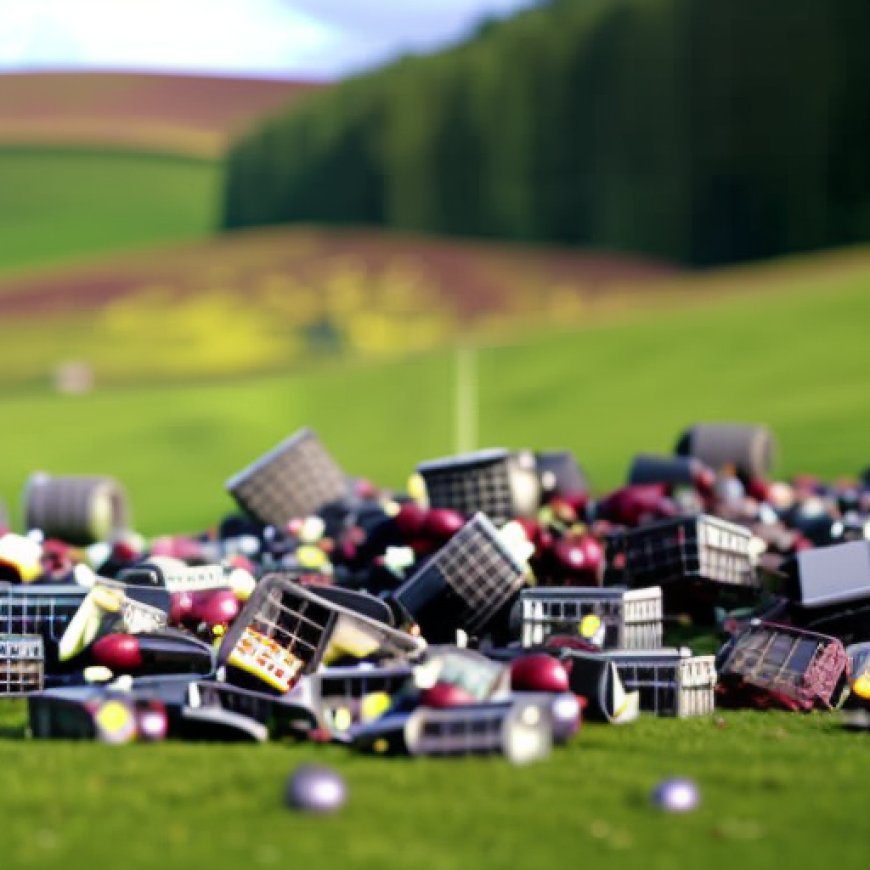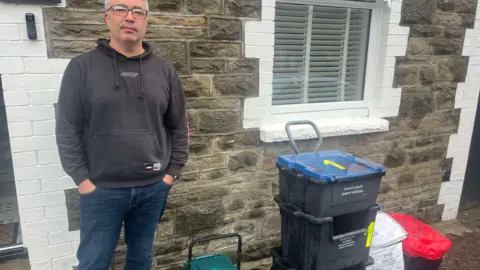Waste recycling: Homes in Wales have the most bins in the UK


Homes in Wales Have Highest Average Number of Bins in the UK

Introduction
Homes in Wales have the highest average number of bins in the UK, with some residents considering them ugly and dangerous.
Sustainable Development Goals (SDGs)
The country is currently second in the world for recycling household waste, only behind Germany, aligning with SDG 12: Responsible Consumption and Production. The Welsh government attributes this success to the practice of separating waste for recycling, contributing to SDG 11: Sustainable Cities and Communities.
Number of Bins per Household
Research shows that households in Wales have up to 10 bins each. Blaenau Gwent, Merthyr Tydfil, and Neath Port Talbot are among the areas with the highest number of bins in the UK.
Residents’ Views
Opinions among residents in Blaenau Gwent are mixed. Some find the multiple bins system inconvenient and believe it makes the area look ugly. Others appreciate the recycling options in Wales and consider them to be effective.
Types of Bins
As a matter of course, households are provided with six bins for paper, plastics, cans, glass, cardboard, and food waste, in addition to a bin for non-recyclable waste. There are also optional collections for textiles, batteries, small electrical items, garden waste, and nappies, each requiring separate containers.
Bin Statistics
According to a study by the Taxpayers’ Alliance, Blaenau Gwent and Merthyr Tydfil have the highest number of possible bins in the UK, at ten. The Welsh average of six bins per household is higher than any other region in the UK. Neath Port Talbot has the most available bins in Wales, at nine, while Gwynedd has the lowest, at five.
Impact on Residents
Some residents in Blaina, Blaenau Gwent, express dissatisfaction with the multiple bins system. They find the bins ugly and claim they block pavements, making them dangerous. Others believe that the effort of sorting waste is worthwhile for the environment.
Challenges and Costs
Dr. Tommaso Regianni, a senior lecturer at Cardiff University’s business school, highlights the costs associated with multiple bins, both physical and psychological. He suggests that positive, rewards-based enforcement and educating on recycling from a young age could lead to better results.
Conclusion
While some residents in Wales find the multiple bins system inconvenient and unattractive, it has contributed to the country’s high recycling rates. By keeping materials separate, Wales reduces waste sent to incineration and landfill, aligning with SDG 12. The Welsh government aims to continue increasing recycling rates and promoting sustainable waste management practices.
SDGs, Targets, and Indicators
1. Sustainable Development Goal: SDG 12 – Responsible Consumption and Production
- Target 12.5: By 2030, substantially reduce waste generation through prevention, reduction, recycling, and reuse
- Indicator 12.5.1: National recycling rate, tons of material recycled
2. Sustainable Development Goal: SDG 11 – Sustainable Cities and Communities
- Target 11.6: By 2030, reduce the adverse per capita environmental impact of cities, including by paying special attention to air quality, municipal and other waste management
- Indicator 11.6.1: Proportion of urban solid waste regularly collected and with adequate final discharge
3. Sustainable Development Goal: SDG 13 – Climate Action
- Target 13.3: Improve education, awareness-raising, and human and institutional capacity on climate change mitigation, adaptation, impact reduction, and early warning
- Indicator 13.3.1: Number of countries that have integrated mitigation, adaptation, impact reduction, and early warning into primary, secondary, and tertiary curricula
Analysis
1. The issues highlighted in the article are connected to SDG 12 (Responsible Consumption and Production), SDG 11 (Sustainable Cities and Communities), and SDG 13 (Climate Action).
2. Based on the article’s content, the specific targets that can be identified are:
– Target 12.5: By 2030, substantially reduce waste generation through prevention, reduction, recycling, and reuse.
– Target 11.6: By 2030, reduce the adverse per capita environmental impact of cities, including by paying special attention to air quality, municipal and other waste management.
– Target 13.3: Improve education, awareness-raising, and human and institutional capacity on climate change mitigation, adaptation, impact reduction, and early warning.
3. The indicators mentioned or implied in the article that can be used to measure progress towards the identified targets are:
– Indicator 12.5.1: National recycling rate, tons of material recycled.
– Indicator 11.6.1: Proportion of urban solid waste regularly collected and with adequate final discharge.
– Indicator 13.3.1: Number of countries that have integrated mitigation, adaptation, impact reduction, and early warning into primary, secondary, and tertiary curricula.
Table: SDGs, Targets, and Indicators
| SDGs | Targets | Indicators |
|---|---|---|
| SDG 12 – Responsible Consumption and Production | Target 12.5: By 2030, substantially reduce waste generation through prevention, reduction, recycling, and reuse | Indicator 12.5.1: National recycling rate, tons of material recycled |
| SDG 11 – Sustainable Cities and Communities | Target 11.6: By 2030, reduce the adverse per capita environmental impact of cities, including by paying special attention to air quality, municipal and other waste management | Indicator 11.6.1: Proportion of urban solid waste regularly collected and with adequate final discharge |
| SDG 13 – Climate Action | Target 13.3: Improve education, awareness-raising, and human and institutional capacity on climate change mitigation, adaptation, impact reduction, and early warning | Indicator 13.3.1: Number of countries that have integrated mitigation, adaptation, impact reduction, and early warning into primary, secondary, and tertiary curricula |
Source: bbc.com








